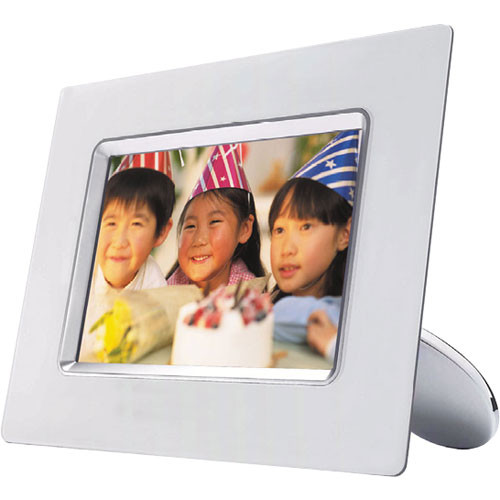

Their price is around $167, which isn’t too horrible considering the great image quality of this particular frame. It seems that the only online retailer that I can find for this product is Amazon. To me, that really doesn’t make this feature all that useful, except maybe for passing it around at a party. I was able to get 2hrs per charge when using all the default settings for brightness etc. That may sound exciting and great, but the only problem is that the battery life is pretty crappy. You can use the 7FF1 untethered to a power cord. While it does have a contemporary flavor, the style is simple and basic.īesides the auto power features, I’ve not yet mentioned one other feature that sets this digital photo frame apart from others. In landscape or portrait orientation, this frame can fit into almost any decor. The pictures shown in this review do not do it justice. It has a very crisp, bright screen with good color saturation. In use, I found the Philips 7FF1 digital photo display to be a welcome addition to my home. In slideshow mode, images will continuously cycle depending on the transition effect and frequency settings. In this mode, one image will remain on the display until you press an arrow key to advance or go back to a previous photo. There is also a browse mode, which you can have display information pertaining to the photo in a status bar below it. One mode is the thumbnail view as seen above. The status screen tells you how much space is left in internal memory. You can’t change the time, just the brightness level that changes. The weird thing is that this is hard coded. Nice! There’s also a setting to change the brightness level between 6pm and 6am. Yay! This means that you can have the frame set to turn on around 5pm when you get home from work, and then turn off at 11pm when you go to bed. This is the function I’ve been waiting for! With the Philips 7FF1, you can set an auto on and auto off time. Better implemented than other frames I’ve reviewed. The transition effects are really pretty good with this frame. The frequency can be set from 5 seconds up to 1 day. This includes screen orientation, frequency (speed that pictures change), transition effects and order. In setup mode, you have the ability to change the different settings for the slideshow. They really need to work on that aspect of the product. I will warn you now that navigating through the menus can be very frustrating. The row of buttons along the top back edge of the frame allow you to interact with the display and onscreen menus. More about using the frame unplugged in a bit. The battery will charge no matter if the frame is powered on or off. The On / Off switch has an LED that shows the status of charging the internal Lithium ion battery. When you plug the frame into your computer, it shows up as an external drive that you can drag and drop photos to.
#Philips 7 inch digital photoframe Pc
You can also use the included USB cables to attach your digital camera to the frame for image downloading, or even your PC / Mac. I guess it’s there for people that don’t have an extra flash card that they can just leave plugged into the frame. But then it’s also odd that they included any at all. As cheap as flash memory is, you would think they would have included more. In addition to the card slots, the frame has 12 megabytes of internal memory that you can use to copy images into. One for Compact Flash and one for SD, MMC or Memory stick. Without manipulating the stand, you can set the frame up in either landscape or portrait orientation. The stand is pretty heavy, which keeps the frame from scooting around on your desk when you don’t want it to. You just line it up and give it a turn to lock it in place. Viewing angle (CR>5): Horizontal (-85°~85°), Vertical (-85°~85°)Ĭompact flash (Type I) and SD/MMC/Memory stick slots Vertical dot pitch: 0.1905 mm, Horizontal dot pitch: 0.1905 mm You’ll just have to continue reading to find out what that feature is…ĥ.4 x 3.6 inch, 133ppi, 16-bit (65,536) color 720×480 resolution LCD display Guess what? It has the feature I’ve been wishing for. Today I’m going to tell you about the 7FF1 (what a wonderful product name) Digital Photo Display from Philips. Although I did like this device, I ended up giving it to my Dad, because it lacked one feature that I’ve always longed for in a digital photo frame. The last such review was the Tricod Frame just this past summer. Over the years, I have had the opportunity to review 4 different digital photo frames. If you buy something through the links on this page, we may earn a commission at no cost to you.


 0 kommentar(er)
0 kommentar(er)
